The Philippines, known as the ‘Land of Smiles,’ is a vibrant archipelago in Southeast Asia comprised of 7,641 islands that showcase both natural beauty and rich cultural heritage.
Philippines has traditionally been known as the Capital of the World’s Festivities.
Festivals provide an opportunity for Filipinos to celebrate their cultural identity and heritage, contributing to a strong sense of pride in their cultural heritage. This sense of identity is an important factor in shaping the Filipino workforce and promoting a positive work culture.
Here are some festivals being celebrated in the Philippines.
The Panagbenga Festival also called the Baguio Flower (Baguio City, Every February 1)
The Panagbenga Festival is an annual flower festival celebrated every February. This festival reflects the history, traditions and values of Baguio and the Cordilleras.
The highlight of the festival is undoubtedly the Grand Float Parade, where meticulously crafted floats adorned with an array of colorful and fragrant flowers parade through the streets of Baguio City.
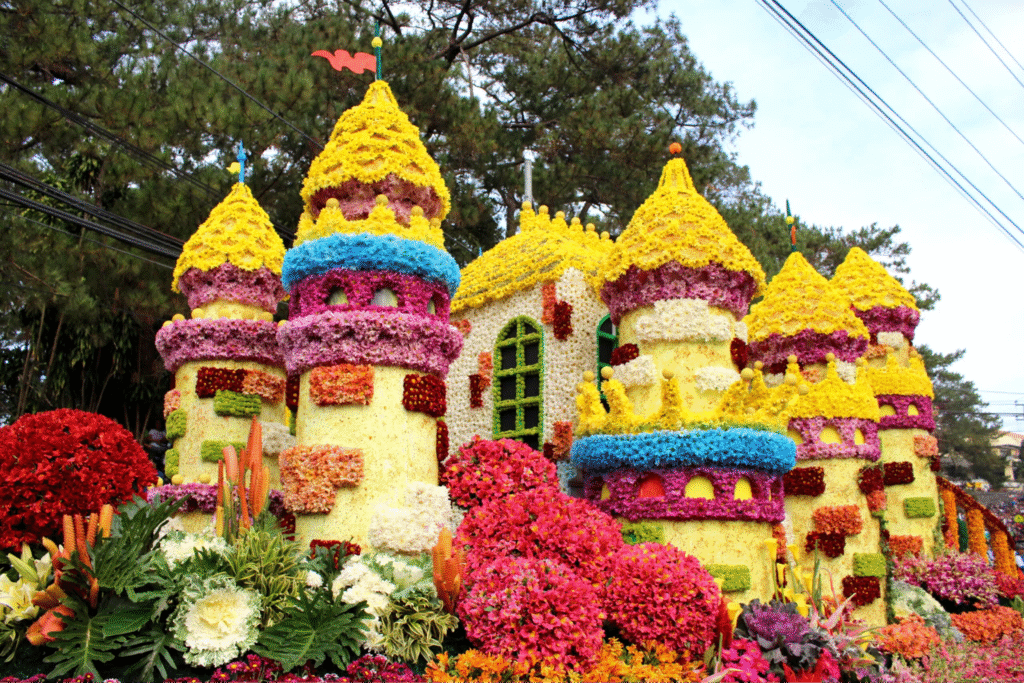
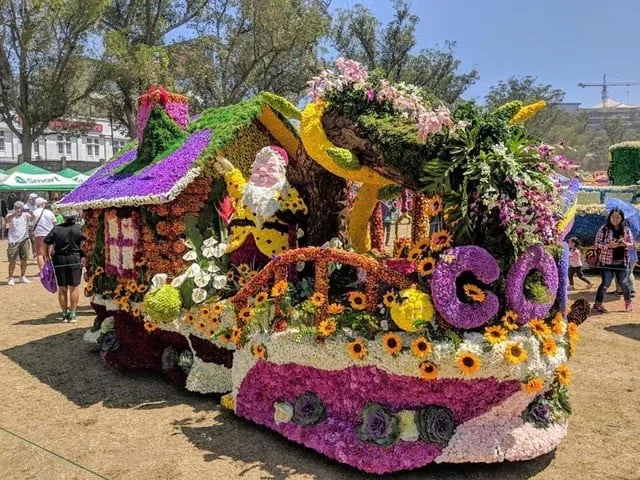
Panagbenga Festival Floats: A Spectacle of Flowers & Creativity.
Pahiyas festival (Held annually on May 15 in Lucban, Quezon)
Pahiyas festival is the biggest and most colourful festival in the Philippines that takes place annually to honour the patron saint of farmers, San Isidro Labrador.
It is a shower of gifts and blessings in the celebratory abundance of a harvest.
It’s a vibrant town transformation! You’ll see arches and houses decorated in colorful leaf-shaped rice wafers, fruits, and vegetables.
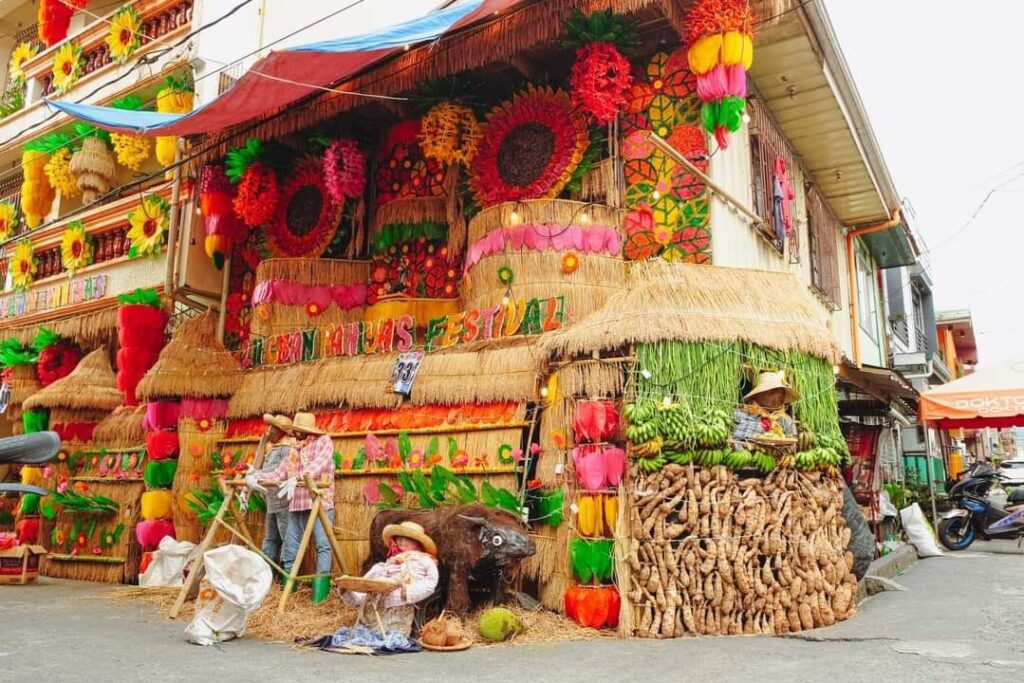
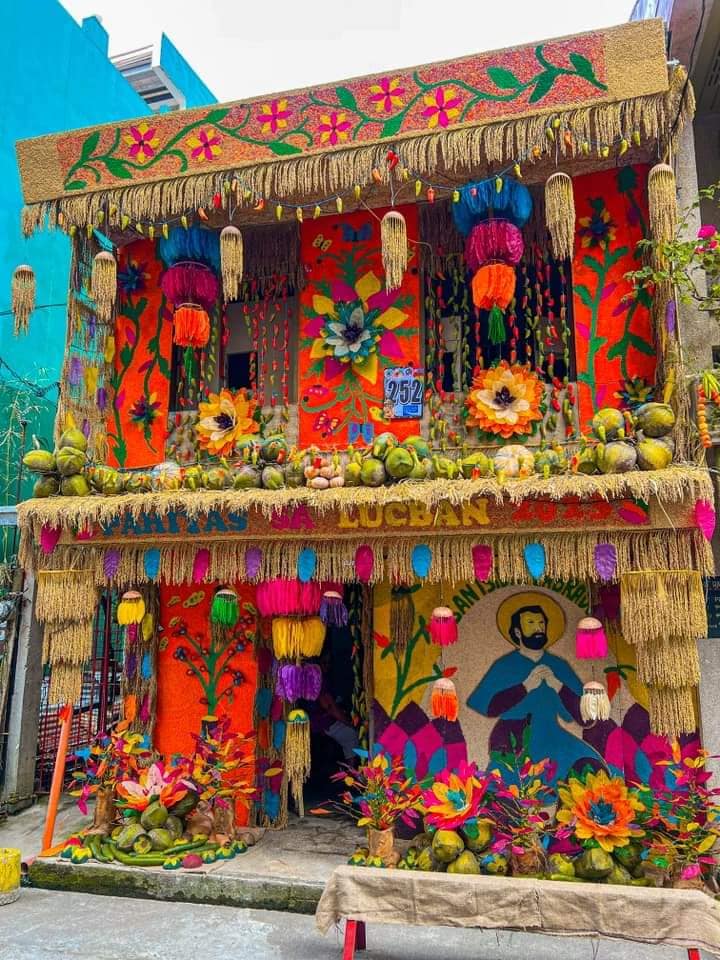
Stunningly decorated houses – Families compete to create the most lavish displays, using thousands of hand-made decorations.
Dagupan Festival or Bangus Festival (Held in Dagupan City, Pangasinan)
Celebrated every April to honor the city’s most famous product, the bangus or milkfish. The festival has its roots in the city’s rich fishing tradition, which dates back to the early 1900s.
The first Bangus Festival was held in 2002, and it has since become one of the most popular festivals in the country. The festival is a celebration of the city’s culture and heritage, as well as a showcase of the bangus industry. It is also a way to promote tourism in the region and attract visitors from all over the world.
- The festival includes various activities such as street dancing, a parade, a cooking competition, and a trade fair.
- The festival not only celebrates the cultural significance of bangus but also promotes the local economy by showcasing the city’s products and services.
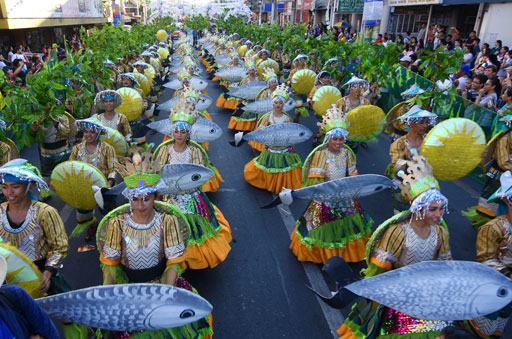
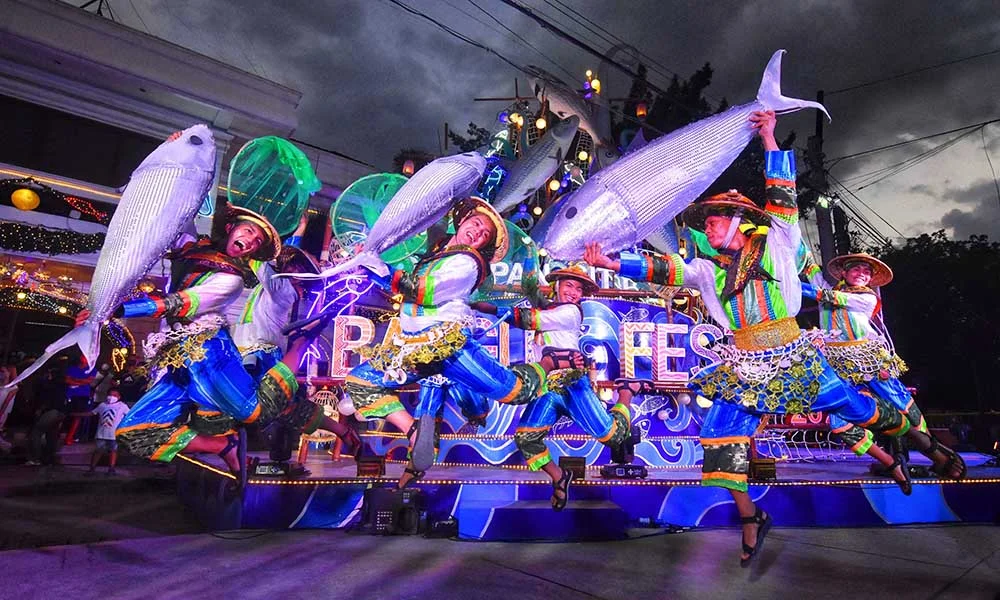
Dagupan is called the “Bangus Capital of the Philippines” because of its sweet, tender, and boneless milkfish.
The Giant Lantern Festival (Kapampangan: Ligligan Parul)
An annual festival held in mid-December in the City of San Fernando in the Philippines.
At the heart of the festival are the giant lanterns, locally known as “parols.” These aren’t your typical Christmas lanterns; they are massive, intricate creations that showcase the remarkable craftsmanship and artistry of the locals. Constructed on steel frames, these lanterns can reach up to 30 feet in diameter and feature intricate designs that depict Filipino culture and traditions.
On Christmas eve, people brought these parul in the town center for the lantern competition and prizes were given away to winners.
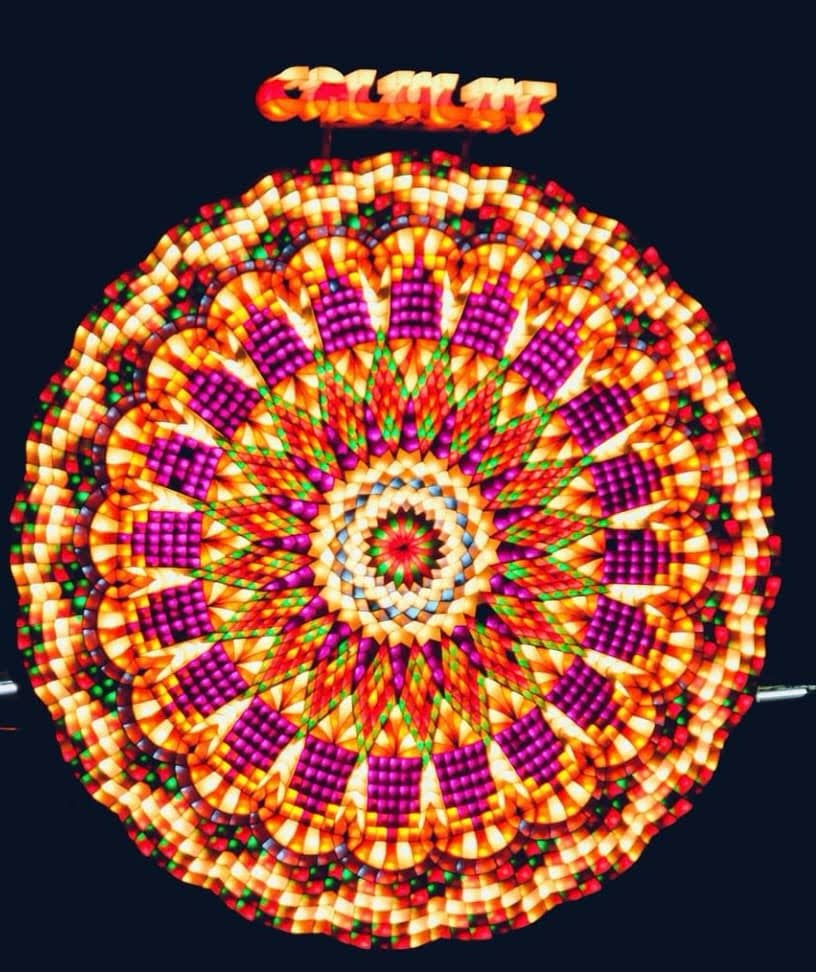
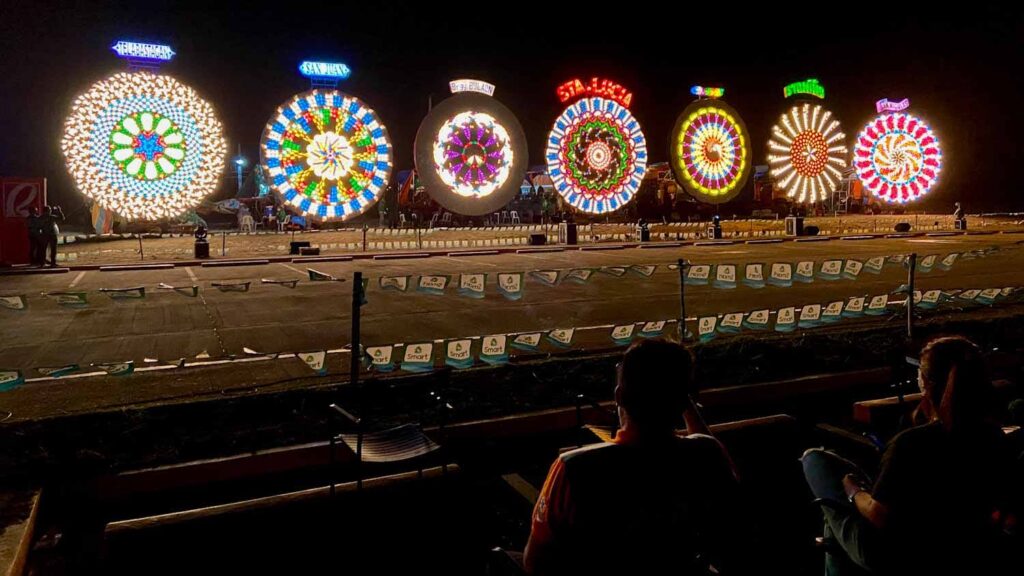
Giant, Dazzling Lanterns – Each parol (lantern) measures 20 feet in diameter and features thousands of spinning lights synchronized to music.
Dinagyang Festival (Religious and Cultural festival in Iloilo City- held annually on the fourth Sunday of January.)
One of the biggest and world-class festivals in the Philippines. It traces the history of devotion to the Holy Child Jesus popularly known to Filipino devotees as Sr. Sto. Nino. The festival also commemorates the arrival of the Malay settlers and the legendary barter of Panay Island from the natives called Ati.
The term “Dinagyang” comes from the Hiligaynon word “dagyang,” which means “merrymaking.” If there’s one thing about Ilonggos, it’s that they definitely know how to live up to that.
Each year, during the Dinagyang Festival, the streets of Iloilo City come alive with a vibrant display of color, music, and dance. Thousands of performers, adorned in intricate and vibrant costumes, take part in street performances and compete in various categories
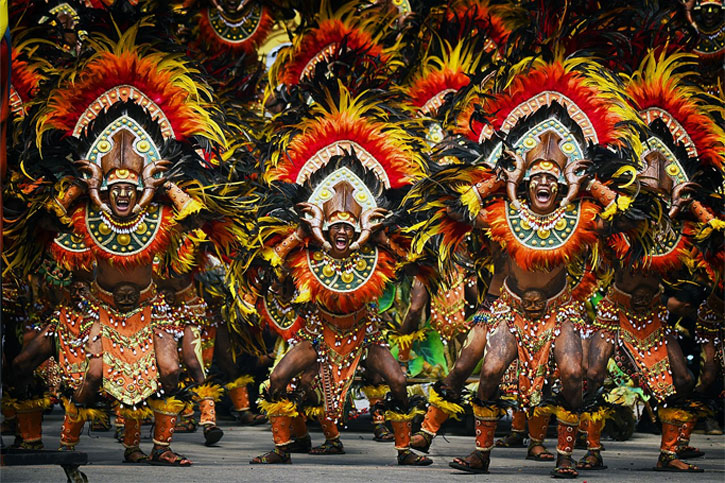
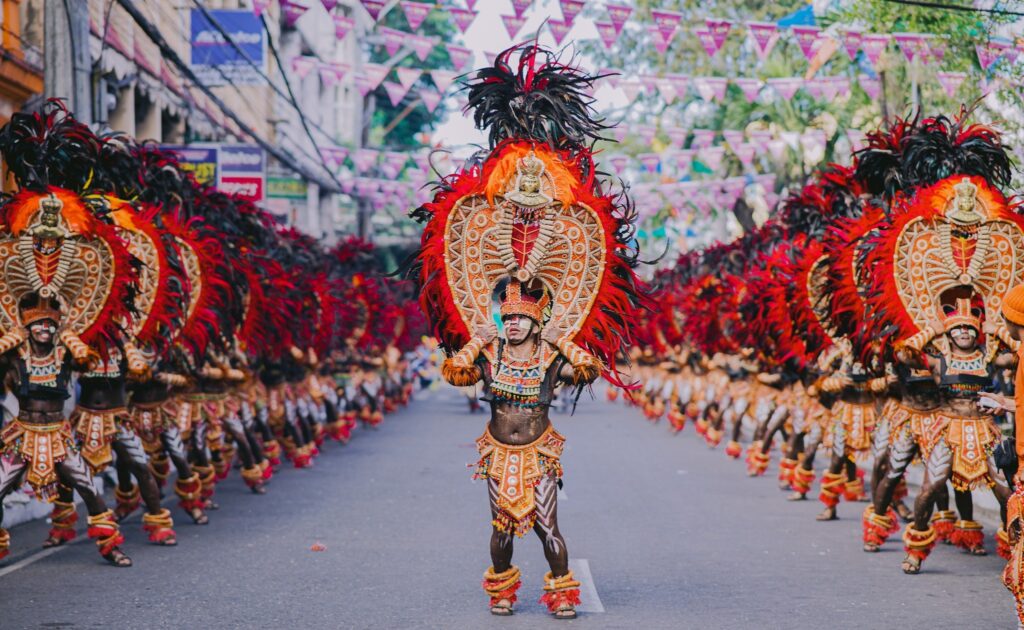
Tribal Warrior Attire (Ati-Inspired)
The Sinulog Festival is Cebu’s biggest and most popular festival. (Held every third Sunday of January )
The feast is in honor of the Holy Child, the Sto. Niño de Cebu.
If you’re familiar with the festival, you must also know about the Sinulog Parade. It has generated the interest of millions of people, including local celebrities and tourists who visit Cebu just so they can join in on the celebration.
There has always been “Sinug” dancing, mostly inside the Sto. Niño church. This can also be seen at the Magellan’s Cross, where women sell candles and offer to dance the “Sinug.”
The dance is performed through singing in groups, along with the chanting and shouting of “Pit Senyor!”
Pit Senyor is short for “panangpit sa Senyor” in Cebuano. In English it means “Call on the Child Jesus” or “Pray to the Child Jesus.”
In Asia, the Sinulog is called the Mother of All Festivals.
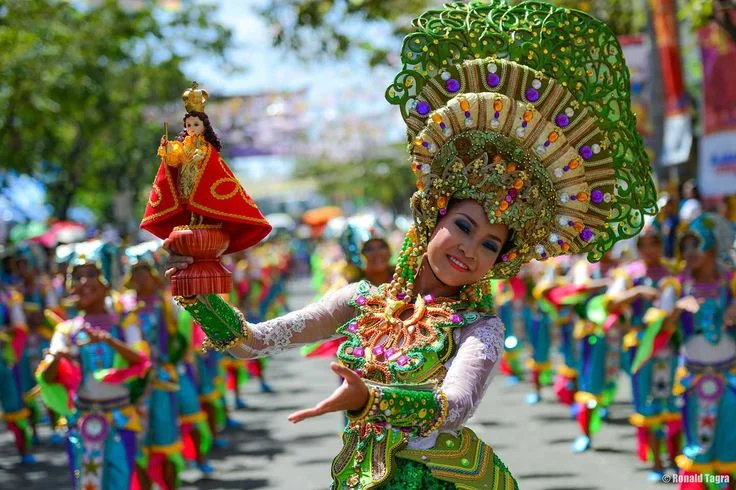
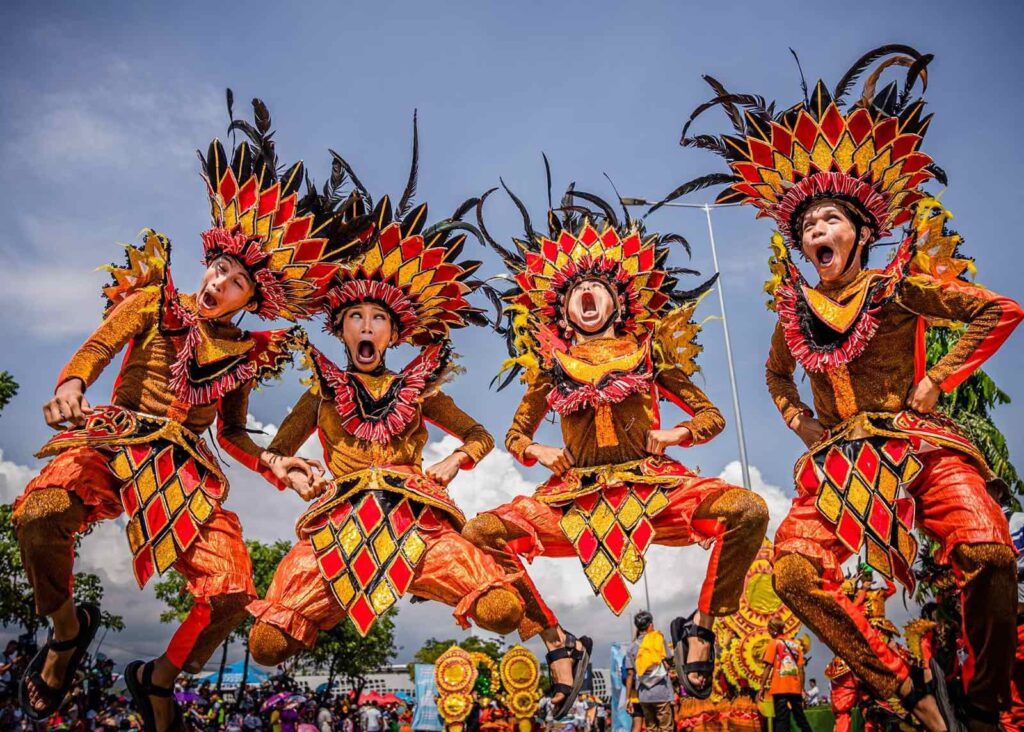
Grand Street Parade & Dance Competition (Main Event)
Maskara Festival (held in Bacolod, Philippines, culminating on the fourth Sunday in October)
This festival, typically held in October, features street dances, live music, and a grand float parade.
During this time, Bacolod was experiencing economic struggles that left many residents discouraged. A group of community activists and artists decided to create a festival to celebrate the city’s tenacity and boost the morale of its people.
Symbol of resilience: Masskara symbolizes the resilience of the people of Bacolod in the face of adversity. They chose to respond to tough times with joy, creativity, and unity.
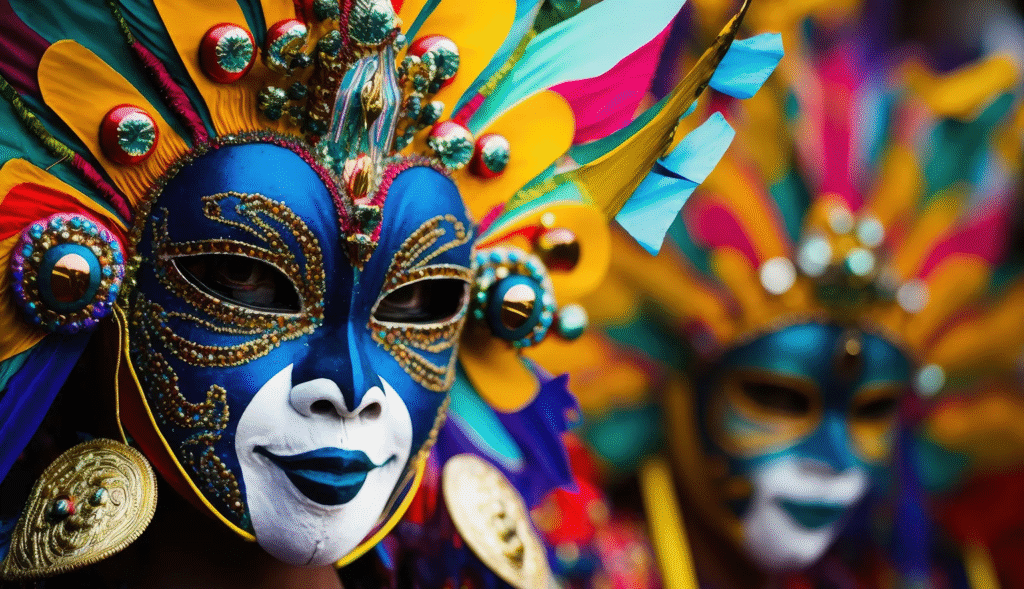

Masked dances: The highlight of the festival is the street dance competition where participants wear colorful masks.




